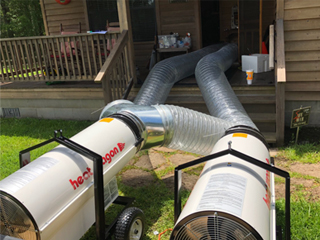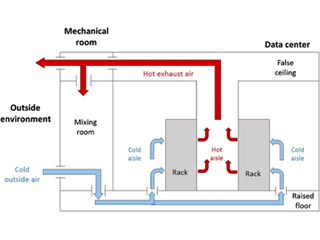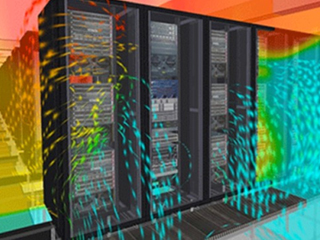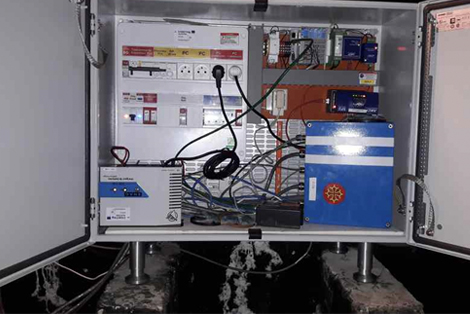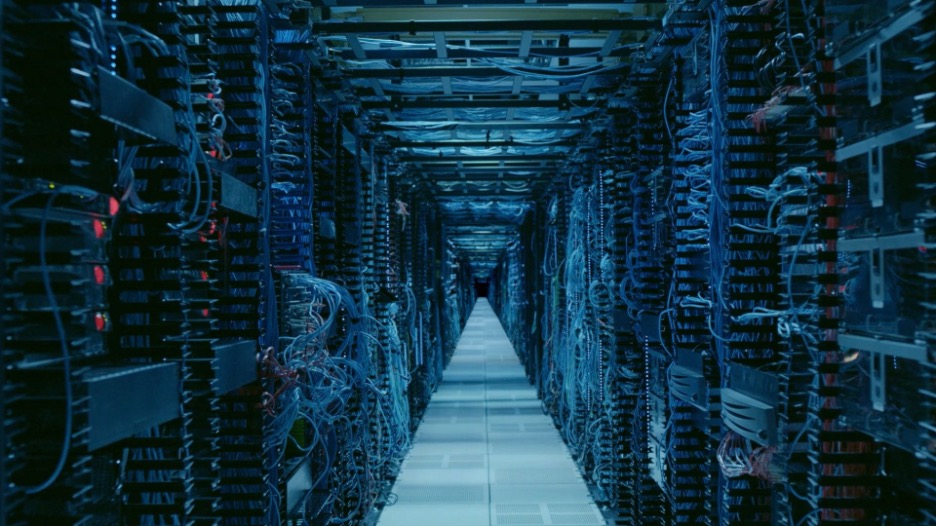
We’ve often heard that for companies to lessen carbon footprint and become environmentally friendly, they must go online or put their papers and process in the “cloud”. But that’s not really the case, as storing files in the cloud also translates to renting a physical space where those data will be stored and accessed when needed. These places are called data centers. They are now getting bigger and bigger as internet penetration rises. And despite being helpful for remote accessing and storing data, the global data centers consume more energy every year and emit carbon as much as the aviation industry.
What drives the increasing energy use of data centers?
Digital services have been a major reason behind the rise of energy use. The demand for digital services has been steadily growing and with its rise comes the development of its infrastructure. And as the infrastructure rises, so is the need for more energy. Some computing services are energy costly like bitcoin mining. It is estimated to have consumed over 73 terawatt-hours (TWh) in 2019. That translates to 6.8 million average US households or equivalent to 20 million UK households. Take note: Bitcoin is just one in about 1,500 cryptocurrencies.
Social media is another factor that contributed to increasing data centers’ electricity use. When an image is posted by someone famous like Cristiano Ronaldo, his roughly 188 million followers already consumed over 24-megawatt hours of energy just by viewing the pictures. Media streaming represents another large portion of data center usage. Media services like Netflix outsource data storage from Amazon Web Services which owns one of the largest data centers. According to Uptime Institute, a leading organization for data center performance, watching a high definition (HD) movie for 2.5 hours consumes 1 kilowatt-hour (kWh) of electricity. But this energy will increase threefold, to 3 kWh, as 4K Ultra HD streaming becomes rampant in 2020.
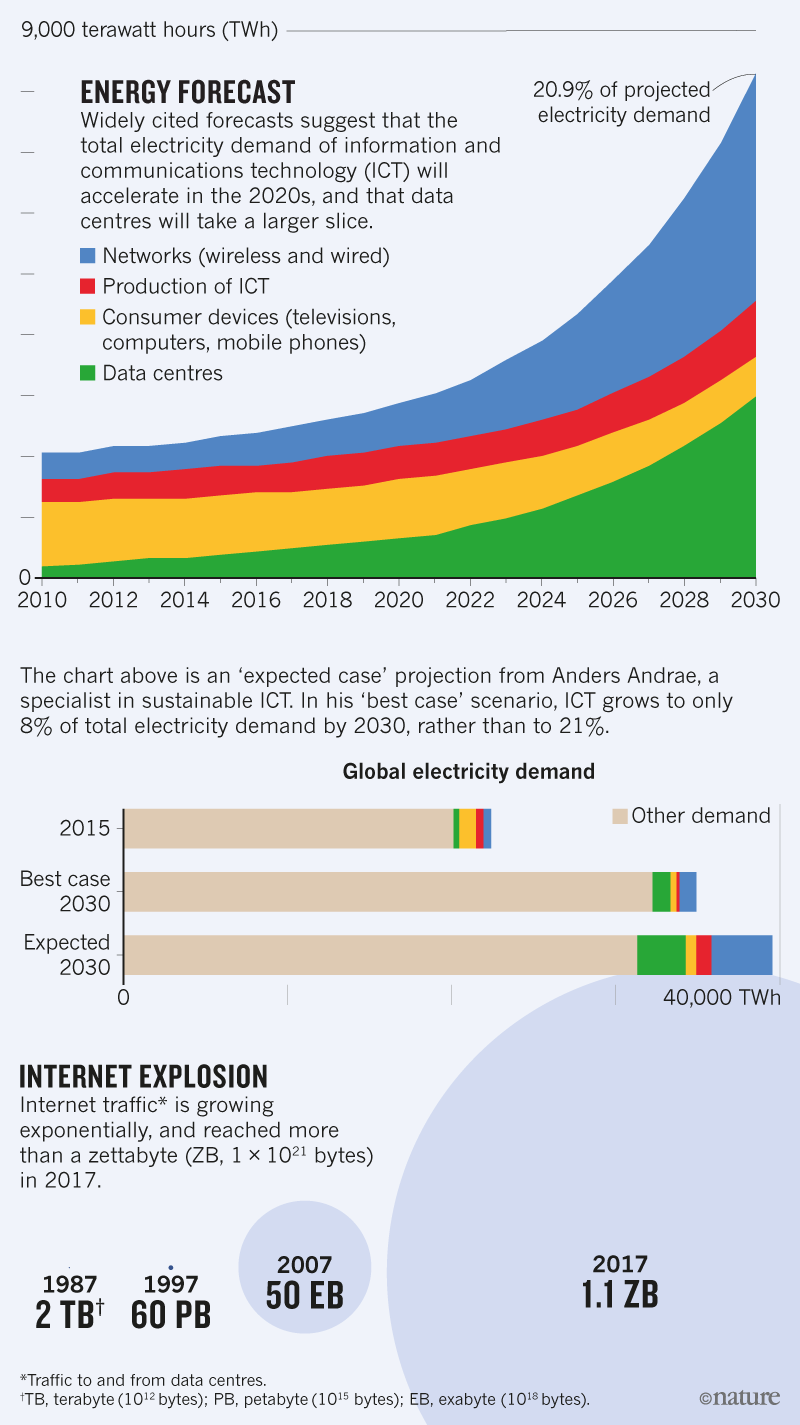
In the coming years, several advancements in technology will further propel the need for bigger and more energy-consuming data centers. Sophisticated technologies like the Internet of Things (IoT) devices, self-controlled cars, and 5G will need to process millions of data. Take note: those technologies are in their infantile stage yet, and will only take up more data space in the coming years.
Worldwide energy consumption of IT services and products
Many energy consumption reports have been published in the past few years. The International Energy Agency (IEA) reported that workloads and internet traffic will double in 2021 yet data centers’ energy demand will remain flat due to increased efficiency.
However, some reports refuted the claim. Uptime Institute Intelligence said that there are very strong factors driving data centers’ energy consumption. Some data even contradicts that of IEA. For example, the IEA reported that worldwide data center energy consumption was 197.8 TWh in 2018, with a slight drop in 2021. But the European Union Resource Efficiency Coordination Action (EURECA) Project said that European data centers consumed 130 TWh last 2017, while Greenpeace estimated the energy consumption of China’s data centers at 160 TWh in 2018. This means that both China and Europe alone have consumed 290 TWh which is far higher than the data provided by the IEA.
How to be more energy-efficient: Lessons from other companies
Although data centers are naturally energy-draining, data companies can do some ways to lessen the burden on the environment. While most data centers are poorly efficient in running their facilities, some big companies are winning. They are pioneering in energy efficiency and reducing energy consumption. Here are some of their ways:
Establishing Sites With Renewable Sources of Energy
Data titans such as Google and Microsoft sign contracts receiving electricity supply from renewable providers such as existing wind and solar farms. However, the US lacks those services. That’s why Google and Microsoft have just built data hubs in Finland while Facebook established theirs in Denmark and Sweden — all countries are getting the majority of their electricity on hydroelectric sources. Google also signed a deal buying energy from the Netherland’s largest solar energy park, so it can power one of Google’s European data centers.
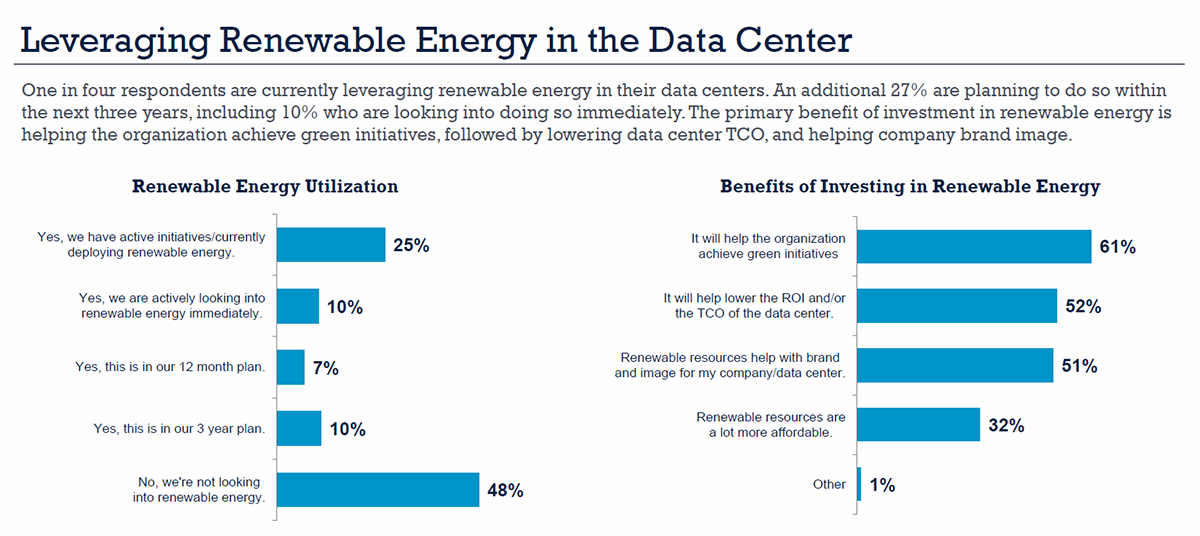
However, not all companies are trailing the paths of sustainability. Tech companies like Netflix and Amazon Web Services (AWS) are non-transparent with their energy footprint. Netflix is partnered with Amazon, the largest cloud-computing company. And both have more to explain regarding their green energy sources. For instance, AWS operates its largest hub in Northern Virginia in the United States, an area with the largest concentration of data centers in the world. Virginia gets its electricity from mostly non-renewable sources and only 3 percent comes from renewable providers. Some companies like Microsoft may not outsource electricity from green sources, but to compensate for their CO2 emissions, they invest in carbon offsetting projects like forest rehabilitation.
Renewable-run data centers provide a big impact on carbon emissions, according to Geoff Fox, innovation Chief at DigiPlex, which has operations in Scandinavia. He claims that hydroelectric-powered data centers in Norway emit only 3 grams of CO2 per kilowatt-hour use of electricity. This data comes from the Swedish state-owned energy giant Vattenfall. In France, this same situation would equate to 100 grams of CO2, in California 300 grams, in Virginia 600 grams, and in New Mexico a whopping more than 800 grams of carbon emission.
Some large data center companies in Asia are a growing carbon producer. Most of them such as Tencent in Baidu, Alibaba in China, Naver in South Korea, and Tulip Telecom in India have been reserved regarding their energy consumption and carbon emissions, according to the environmental watcher Greenpeace. But because they get their energy mostly from non-renewable sources, it’s safe to assume that they emit larger carbon footprint.
Establishing data centers in colder countries
Since data centers are running 24 hours seven days a week, they get hot fast, thus cooling systems are necessary. Cooling system incurs yet another expense aside from running the servers themselves. To somehow minimize energy costs in cooling servers, the natural climate and environment make up some of company strategies.
Switching to areas where cooling is provided naturally is one way of improving energy efficiency apart from getting electricity from low-carbon sources. In Iceland, for example, temperatures hover around 0°C for much of the year. Their cooling technologies don’t consume much electricity because of the already low ambient temperature. “It’s all natural cooling here,” said Tate Cantrell chief technology officer in Verne Global, a London company which has its office in Norway. “Our chiller is an open window.”
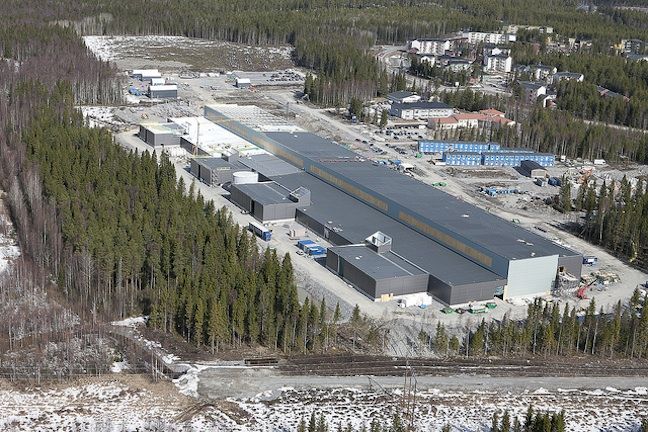
Facebooks Luleå data center in the Arctic
Other Nordic data companies take advantage of the country’s climate. DNB, Norway’s biggest bank, operates its main data center in a bunker near freezing water. The frozen water cools the data centers. Kolos Data Center, the largest data facility being built, is located in Iceland, again making use of the cold climate to minimize cooling costs, and what’s more promising is its use of renewable energy sources for much of its operations.
Transferring the Heat Resource
The next best step is for facilities to transfer the heat to places where it’s necessary, instead of venting it out to waste. In Iceland, where cold climate dominates most of the year, heat is a vital resource. So big companies who have the financial capacity to develop machineries and technologies should consider energy-transfer techniques as a way of maximizing heat emission.
Digiplex is one company that will do it. It is located in the cold climate of Stockholm, Sweden. They will divert its hot air to heat water running through the city’s district heating system. This process will eventually heat some 10,000 apartments.
Conclusion
Hopefully, data centers might be less energy-consuming if more energy-efficient technologies come into play. It has already been evident in personal computers and other devices. When some technologies improve, their energy efficiency develops. For example, tech companies have less considered older power-hungry hardware and commissioned more efficient server virtualization.
Flash storage has replaced hard disk drives in hyperscale and enterprise markets. As flash becomes cheaper than traditional disk, there’ll be even more energy-efficient storage hardware. And compared with years ago, we have better cooling systems and more efficient construction practices giving rise to efficient buildings.
To prevent our future massive data centers from using a bigger percentage of our global energy, companies and developers must consider improving the computer architecture of the data centers: faster but consuming less energy. Otherwise, we have to double our power plants to accommodate the increasing demands of the virtual world.
Further Reading
https://www.se.com/ww/en/work/campaign/data-center-design-overview/

